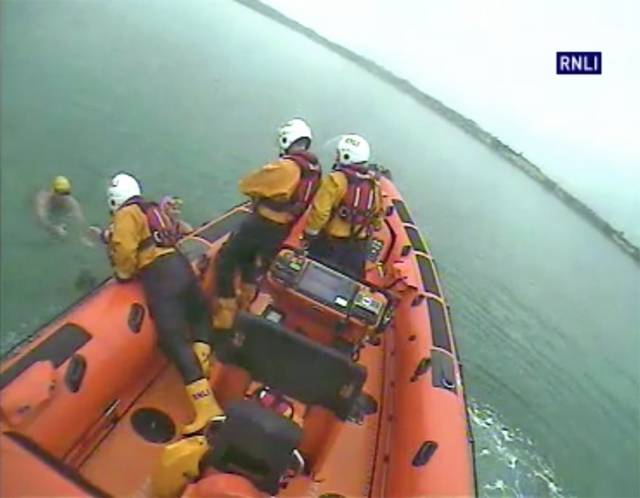#RNLI - Skerries RNLI responded yesterday afternoon (31 October) to reports of swimmers in difficulty to the south of Colt Island off the north Co Dublin town.
Shortly after 12 noon, a member of the local fishing fleet alerted Dublin Coast Guard that several swimmers appeared to be having difficulty returning to shore.
Skerries RNLI volunteers launched the lifeboat, with Peter Kennedy at the helm and crewed by Gerry Canning and Steven Johnston, all of whom were already in the station attending a casualty care course when the pager sounded.
Arriving on scene, the crew quickly located a male and a female swimmer, with a fishing vessel standing by them.
The male swimmer had been dragged further out to sea than intended and, with the effects of the cold water starting to set in, was struggling to swim against a strong current.
The female swimmer was in no difficulty and had gone to assist him. She was also able to tell the crew that two other swimmers who had been in the area had made it ashore themselves.
Both swimmers were taken on board the lifeboat, and the woman was dropped ashore to retrieve her belongings. However, the man was very cold and the crew decided he should be brought back to the station for further assessment.
He was brought into the warmth of the station by members of crew on the shore who began to treat him for mild hypothermia. As a precaution, he was then checked over by Skerries RNLI’s honorary medical officer, Dr Seamus Mulholland.
After a short time, the man was well enough to be on his way and the Skerries lifeboat volunteers returned to their casualty care training.
Speaking after the callout, Skerries RNLI lifeboat press officer Gerry Canning said: “The speed of response is crucial in cases like this as the effects of cold water can cause a casualty’s condition to worsen quite quickly.
“You won’t get a much quicker launch than when there is already a full crew in the station training when the pagers sound.”
































































